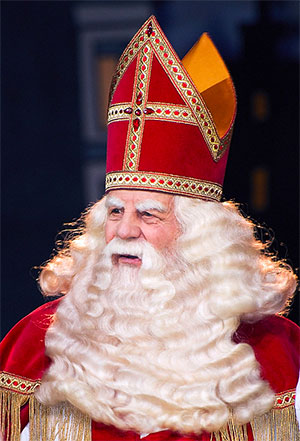
Kicking off the festive season with Sinterklaas in Belgium
Saint Nicholas, or "Sinterklaas" in Dutch, is a cherished figure celebrated on December 6th, distinct from Christmas's Santa Claus. Renowned as a legendary gift-bringer, he bestows treats like marzipan and chocolate upon well-behaved children. On Saint Nicholas’s eve, youngsters leave carrots for his donkey and a glass of alcohol for the Saint himself. Adding enchantment to the season, bpost.be, Belgium's postal service, provides a special address for children to send letters or drawings to Saint Nicholas. Bpost ensures each child receives a personalized response and a small gift from the beloved saint, creating a heartwarming holiday tradition.
Going back in time, the yule log, a festive French pastry
The yule log goes back to the Middle Ages. At that time, the yule log came from a tree: a big wood log was sacred. For the winter solstice, for the longest night of the year, people used to burn a huge log soaked in oil or wine. The oldest or youngest child of the house was to put the very log into the hearth. In some French regions, the log was added on Christmas night. The ashes of the log were kept until the next year; they were said to protect and bring luck to the house.
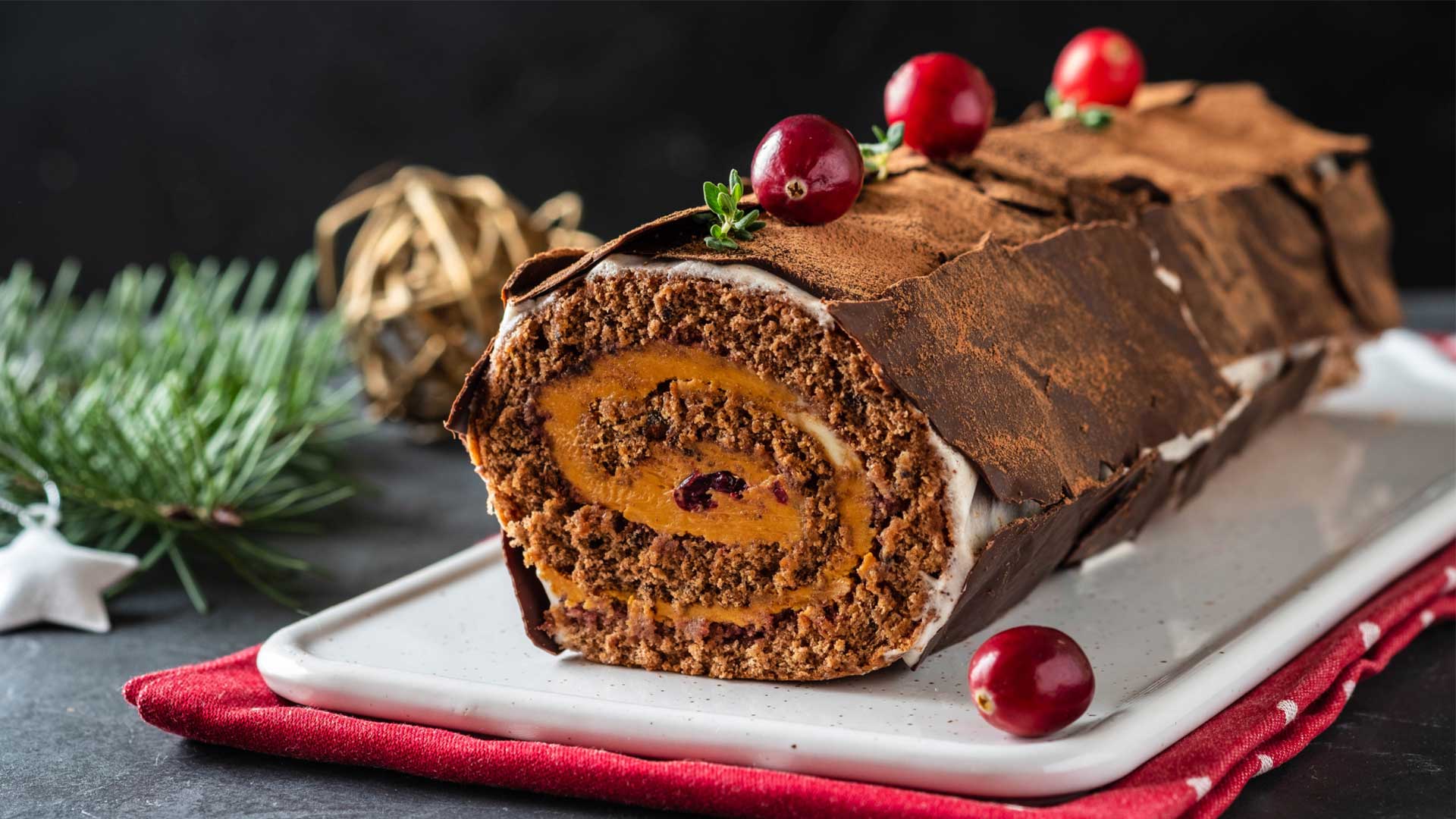
Photo: Canva
Christmas in Denmark – fighting for the almond!
In Denmark, we celebrate Christmas on 24 December. Most people eat duck or roast pork followed by risalamande – a rice pudding made with chopped almonds and covered in hot cherry sauce.
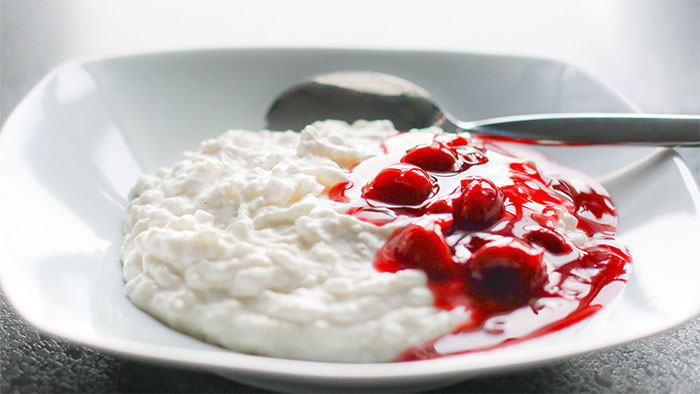
The risalamande always contains one whole almond and whoever finds it, wins a gift – typically a marzipan pig. There is fierce competition for the almond and finding it results in childish triumph and glee – even for the adults! The person lucky enough to get the almond will often hide it in their mouth just for the fun of watching everyone desperately try to find it in their portion. A fun Christmas tradition!
Risalamande - how to make the classic Danish Christmas dessert (danishthings.com)
Italian Christmas unveiled: culinary delights until Befana's arrival
When contemplating Christmas culinary traditions in Italy, the most formidable challenge lies in choosing from the vast array of dishes laid out on tables on December 25th. The typical Italian Pranzo di Natale varies quite consistently across regions. However, the celebration often begins with a spread of antipasti featuring affettati, cheeses, olives, and bruschetta. The first course usually involves a pasta dish, among which Tortellini in Brodo and Lasagna are an absolute must! As for the main course, a staple during the holiday season is cotechino with lentils (said to bring good luck). At the end of our Christmas binge, along with an array of cookies, pastries and sweet wines, Panettone and Pandoro take centre stage.
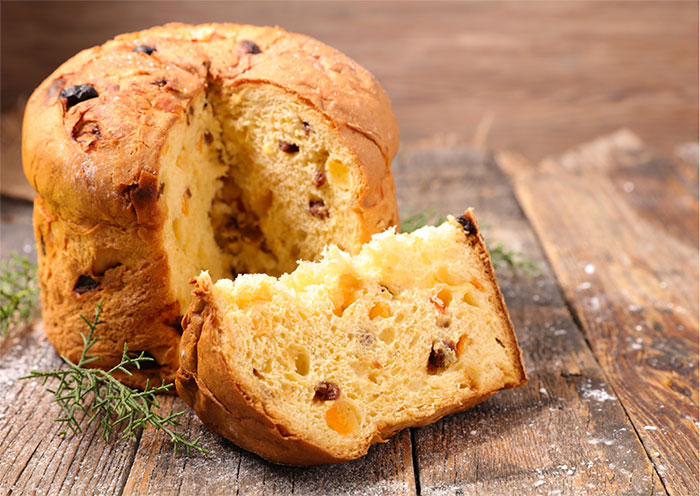
Far from concluding, Christmas in Italy extends until January 6th with the arrival of Befana, the enchanting Christmas witch. Flying on her broomstick, she leaves sweets and gifts in coloured stockings.
Serbian Christmas Bread – Česnica
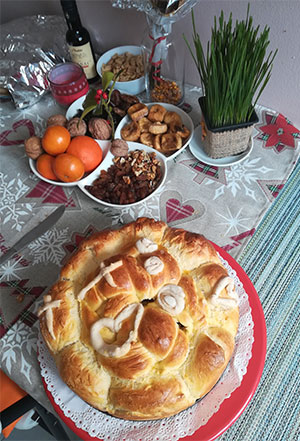
Orthodox Christmas, unlike the Western world’s version, is celebrated on the 7th of January each year. Serbian Christmas is an endless fairytale of folk rituals and offerings, which culminate in the Christmas meal, the richest, the most significant and the most celebratory meal the family will have in the year.
The centerpiece of the Christmas table is Česnica [chesnitsa] the ceremonial bread with a silver or gold coin hidden inside. On Christmas, all family members rise, stand in a circle, touch the bread and hold it in their fingers and rotate it three times counterclockwise while saying their prayers. After that, every family member breaks off a piece of the bread. The one who finds the coin is believed to be exceptionally lucky in the coming year.
Here is a video on how to make Serbian Christmas bread "Česnica" (youtube.com).
Crimbo with a Cracker
Picture this: Christmas in the U.K, where dinner transforms into a comedic explosion courtesy of the Christmas Cracker. It is no ordinary tube; it is a covert agent of chaos with a banger waiting to rival fireworks. The cracker-pulling ritual is a synchronized ballet, a festive dance-off for the title of Cracker Connoisseur. Inside? A trio of delights: crowns that scream holiday chic, jokes older than your great-grandma, and gifts so small you'll question the elves' job security. Here's to the Christmas Cracker, turning dinner into a side-splitting saga, because nothing says "Happy Holidays" like explosive laughs and paper hats for all!
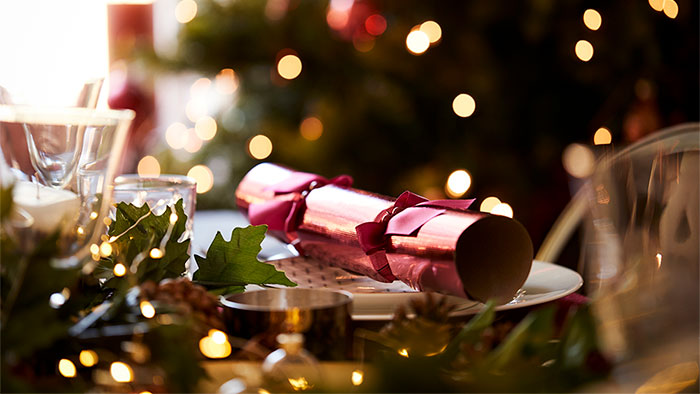
Christmas in Germany – smoking up the living room!
Ever considered making your house smell like a Catholic church for the holidays? In Germany, particularly the parts that used to make up the German Democratic Republic, this is a surprisingly popular choice. It is commonly achieved through the use of the so-called Räuchermännchen, or little smoking man.
These wooden figurines, invented in Thuringia in the 19th century, come apart so a small Räucherkerze, smoking candle, can be placed inside. It is this cone-shaped “candle” (made from charcoal, natural resins, woods and essential oils) that emits the potent smell of, typically, incense.
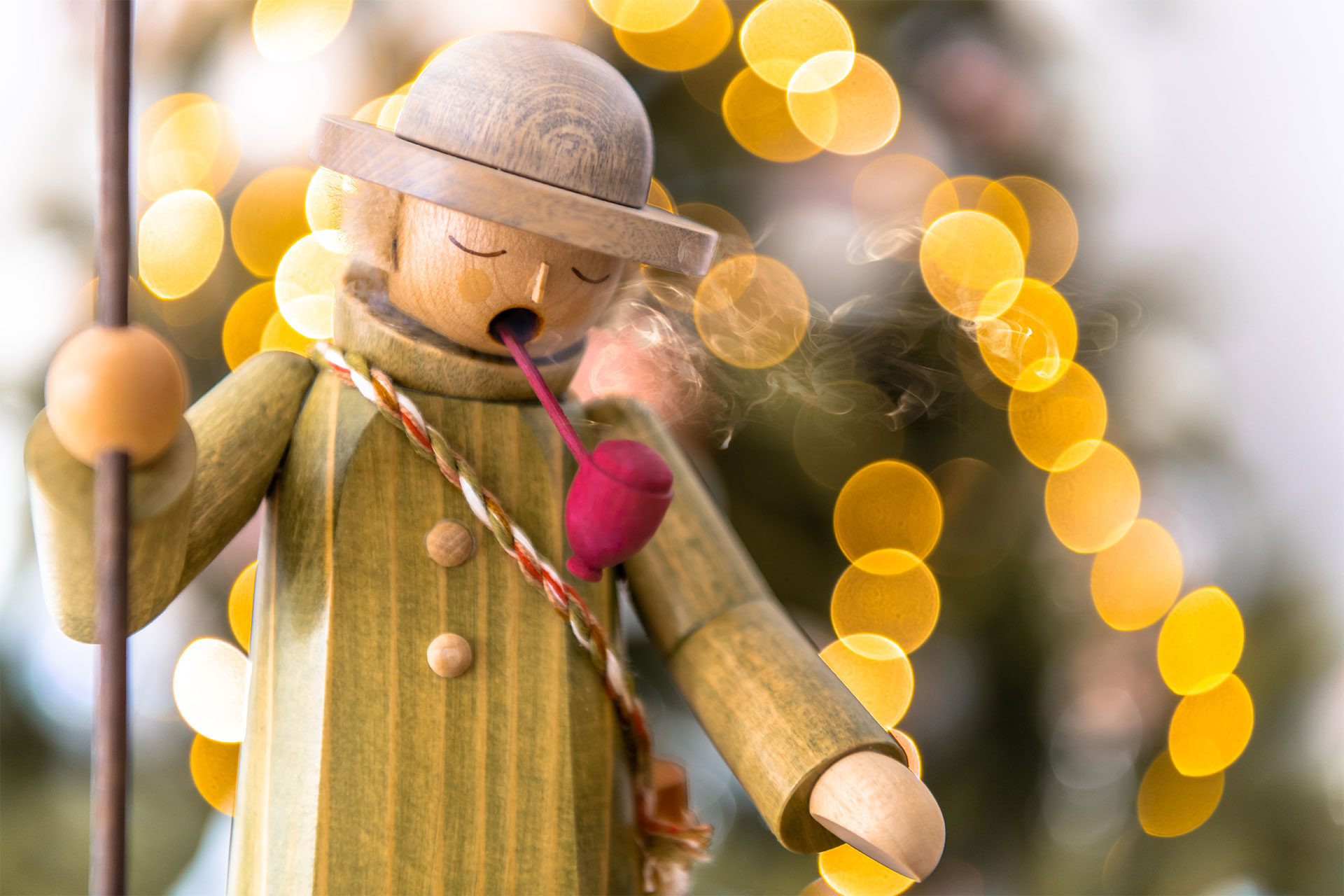
Photo by Kurt Weigel on Unsplash
Vienna Christmas Tradition: Fried Carp with Potato Salad
There are many variations of a traditional Christmas meal in Austria, but in Vienna, fried carp with potato salad is still the most popular. This is partly due to the long tradition of monastic fish farming producing carp as a Lenten dish (Fastenspeise), which over time also became the meal to celebrate Christmas. The preparation involves coating carp fillets in a seasoned flour or breadcrumb mixture before frying them until golden brown. The crispy exterior contrasts with the tender fish, creating a flavorful and festive dish, typically served with potato salad. While the carp itself is a quite healthy food, frying adds some luxury to the Lenten dish but also reduces its nutritional value. But you know the saying: you don’t get fat between Christmas and New Year, but between New Year and Christmas!
Hungry for more fish? Have a taste of the Norwegian "lutefisk"
Lutefisk is made from cod caught in the northern parts of Norway during winter ('skrei'). The fish is split along the spine and hung to dry by cold air and wind on wooden racks ('stockfish'). When it's time to eat the lutefisk, the dried fish is first rehydrated and softened in water and lye before it is cooked and finally served with an array of side dishes.
Not everyone likes the taste or texture of lutefisk, but the accompanying dishes make up for it and secure that the meal is a success. These dishes can include boiled potatoes, mashed kohlrabi, mushy peas, sauerkraut, bacon cubes, syrup, brown cheese, lingonberry, mustard and flatbread.
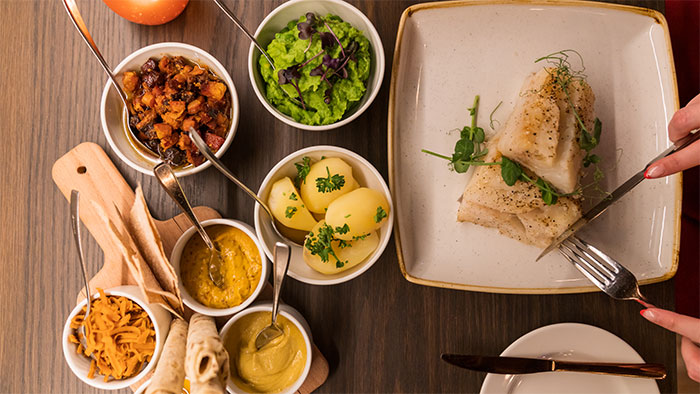
Feel inspired?
If you try any of the dishes described in this article during Christmas, do not hesitate to send us your experience on engage-with@circle-u.eu.
We wish you a Merry Christmas and a Happy New Year!